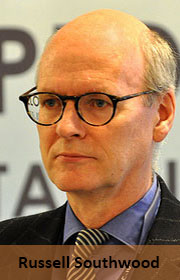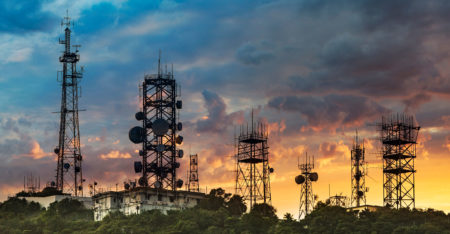 Jamii Telecom launched a public fibre-to-the-home (FTTH) network in Kenya in early 2011, but except for a few gated communities and pilots, nothing has happened in South Africa on this front. However, 2014 may be the year that changes as the lumbering Telkom promises to turn its FTTH pilot into a public service and as a niche player, Posix, goes live with its offering.
Jamii Telecom launched a public fibre-to-the-home (FTTH) network in Kenya in early 2011, but except for a few gated communities and pilots, nothing has happened in South Africa on this front. However, 2014 may be the year that changes as the lumbering Telkom promises to turn its FTTH pilot into a public service and as a niche player, Posix, goes live with its offering.
South Africa has somewhere between half a million and one million homes that can probably afford to pay for an FTTH service, yet no one has really take advantage of the opportunity. Without someone prepared to invest, there will be no customers. And there will be no customers until someone believes they can make a return.
The question is: why has no one been prepared to invest? For all the rhetoric about innovation, South African telecommunications operators and Internet service providers have been conservative in their approach. The bigger ISPs, like Internet Solutions, have clearly thought it was too high risk and have remained focused on the more lucrative corporate market. And the smaller ISPs lack the capital and risk appetite.
But that’s not the whole story. The big gorillas of the industry – MTN, Vodacom and Telkom – have approached bandwidth as something that has to be carefully rationed to home users. There is no market on the continent where you can get so little bandwidth in quite so many different ways: with a few notable exceptions, users are capped and operators have tended to make good money from people paying the punitive rates when they exceed these caps.
These gorillas have so far controlled the main fibre highways, so even if a smaller player felt inclined to tackle the opportunity, they’ll have come up against barriers because of what’s available in the wholesale market.
And then there’s another twist to the story, which comes from the dominant position of an operator that is not even in the telecoms field. Elsewhere, insurgent challengers have offered triple play and fibre delivery. But in South Africa, MultiChoice, with DStv, has effectively dominated this market to the point where local companies will tell you that you can’t take on DStv. It’s not true, of course, but DStv has a psychological lock on the market. But there is a brave new world approaching with video on demand and perhaps the dam will burst at that point.
I happened to notice that Mark Elkins, owner of a small ISP called Posix Systems in Midrand, is offering potential customers FTTH. So far, Elkins, who has between 1 500 and 2 000 customers nationally, has been selling ADSL supplied by MTN and Telkom.
But all ADSL is reliant on what Telkom can provide. It depends on how far you are from the exchange and maximum speeds for many end users are quite slow. There’s also contention issues because of multiple exchanges and the network is not designed for what’s happening. Telkom is rolling out fibre-to-the-curb but it’s a slow process.
To overcome these obstacles, Elkins is planning to build his own fibre backhaul route between Pretoria and Johannesburg. “Our route is from Rosebank to Midrand, Isando to Midrand, and then from Midrand to Pretoria via Midstream Estate/Highveld, Irene, Cornwall Hill, Elarduspark, Menlyn, Lynnwood, The Willows, Equestria, Silver Lakes, Wapadrand, Faerie Glen and Garsfontein,” he says.
Elkins plans to offer FTTH to homes along this route.
“If you are close to or between these areas, we can provide a 100Mbit/s or 1Gbit/s fibre connection,” he says. “You can then get blindingly fast access to the majority of South African content and a fixed contention ratio link to the rest of the Internet with no caps, no data shaping, just pure Internet.”
Additional services can include dial tone (telephone), television, video on demand, offsite backup and cloud-based services. “We are currently asking for expressions of interest in taking a connection to assist with our planning of supplementary routing,” Elkins says.

Residential pricing will be around R600/month for a 100Mbit/s local connection, which includes 3Mbit/s of international connectivity and static IP addresses. Businesses will pay R2 300/month, which includes 1Gbit/s local bandwidth 10Mbit/s on the international leg. Additional international Internet access will cost about R30 per megabit per second at a 20:1 contention ratio.
African Internet users elsewhere on the continent might not understand the idea of buying international connectivity separately when there’s an almost endless supply at the landing stations, but let’s leave the peculiarities of the South African market to one side for a moment.
So far, Elkins calculates that one in 20 of those expressing interest get to the point of making a positive commitment and that interest is building. “Once you see flawless high-speed broadband, it begins to sell itself.”
- Russell Southwood is head of Balancing Act Africa




